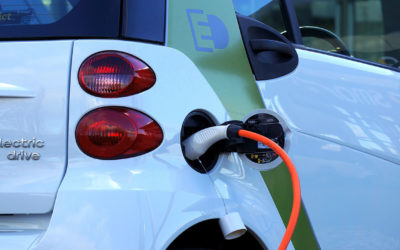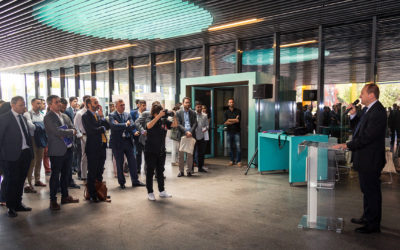"Citizens are changing the way they consume mobility: they are looking for solutions to move from point A to point B"
In 1908, Henry Ford launched the Ford Ton the market, a financially affordable vehicle that arrived to change the paradigm of mobility that had prevailed for centuries: from then on the car would replace the horse as a model of mobility. It was a veritable revolution for people’s mobility and a momentous change in the lifestyle of millions of users.
Since then, the car has been an essential element of our daily life and our economy. It has also been the undisputed king of cities, which have been configured around it to make it as easy as possible for people to move around. Until today. Over the past 60 years, the percentage of population living in urban settings has increased from 34% to 55% worldwide, from 61% to 75% in the European Union and from 57% to 80% in Spain. The unstoppable urbanization of our society has meant having to challenge the current car-centric model. Accidents, pollution, congestion are adverse consequences that directly affect the quality of life of people.
The city of Madrid is no exception: according to the results of the 2017 Quality of Life and Satisfaction with Public Services Survey of the City of Madrid, for Madrid’s citizens air pollution was the second problem affecting the city (31.6%), with traffic and traffic jams being the third one (with 25.3%).
Cities are saying enough is enough. Redesigning our cities has become an imperative to recover them for the people, opting for efficient, safe and sustainable mobility. At the same time, citizens are changing the way they consume mobility: they are looking for solutions to move from point A to point B. Thus, new models are emerging on demand that are shared, flexible, personalized and accessible, plus a whole ecosystem of digital mobility services that seek to meet the different needs of users.
Car manufacturers and public transport operators are offering new digital services relating to their vehicles to improve user experience. Connectivity of cars, drivers and passengers (whether via the car or a smartphone) is enabling the development of new services that seek to improve various aspects of the actual driving experience (traffic, parking, etc.) or to make better use of the time spent in the vehicle every day. New personal and shared mobility services (cars, motorcycles, bicycles, scooters) and aggregating applications from different mobility services are also proliferating.
We are at a time of huge uncertainty, because a new paradigm is being defined. Which services are going to succeed? How will they be monetized? Will they be profitable? Which companies will offer them? The fast-paced process of digitizing our society (internet, smartphones, new digital technologies) is a tsunami that is transforming all sectors. Now it’s the turn of mobility.
"Several of the partners of Madrid in Motion are already deploying new mobility initiatives in collaboration with other companies"
What have we learned from what happened in other sectors?
That people must truly be placed at the centre of innovative efforts in order to gain a good understanding of their needs and behavioural models so that we can offer attractive and satisfactory services; that it is essential to control the direct relationship with users, positioning ourselves as the benchmark app for any given service; that we must experiment with different models and be agile in learning from the market; that we must actively seek cooperation with other companies to offer users comprehensive responses and take them quickly to market.
Several of the partners of Madrid in Motion are already deploying new mobility initiatives in collaboration with other companies: Zity carsharing services (Ferrovial with Renault) and WiBLE (Respol with Kia), the Wondo mobility services integrating app (Ferrovial and Mastercard), mobile payment on buses (EMT, Banco Santander and Mastercard), installing ultrafast chargers (Cepsa with Ionity)… Madrid in Motion has arrived, looking to speed up this collaborative effort in the search for solutions for a new mobility capable of meeting the needs of the new citizen.
We are moving from a structured car-centric mobility to a new mobility with people at its heart. This is a complex time but also a time of opportunities, which must necessarily lead to more sustainable cities and to a better quality of life for their citizens.



